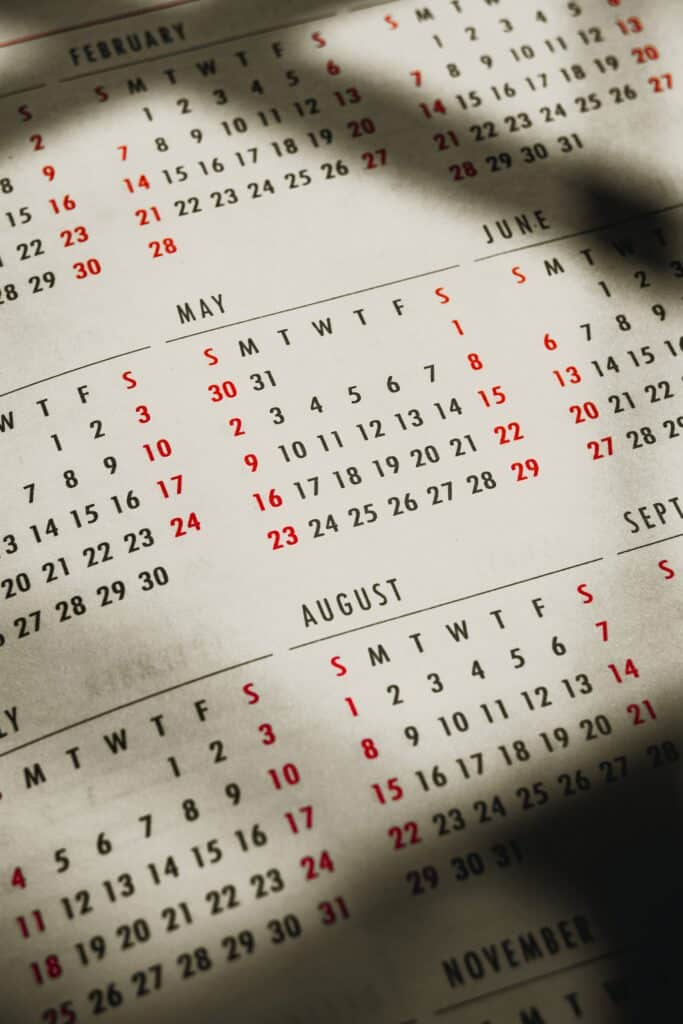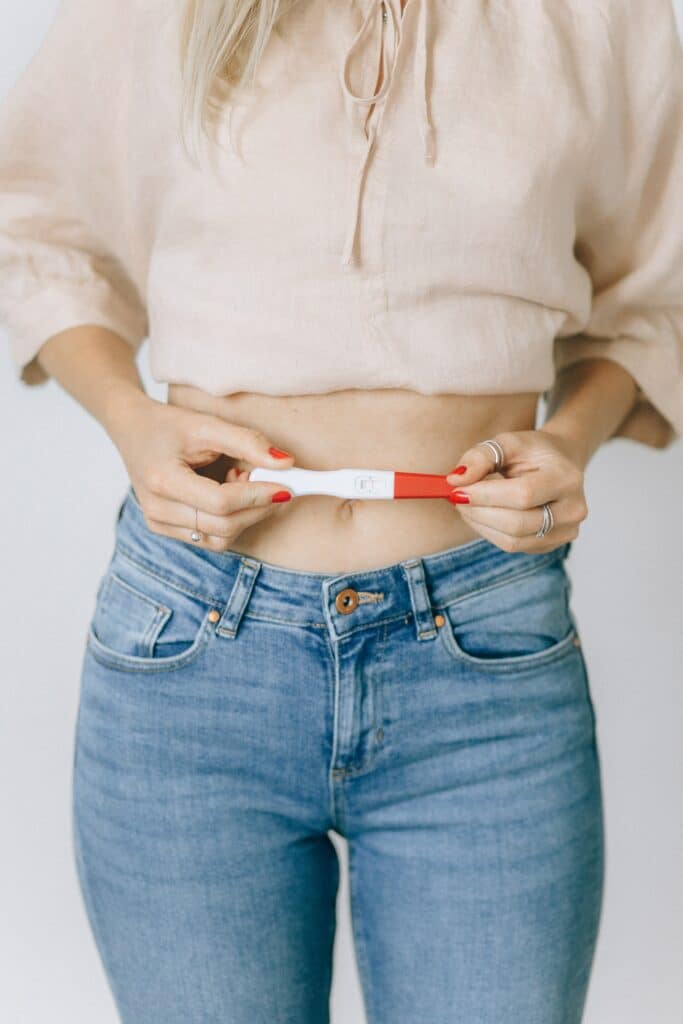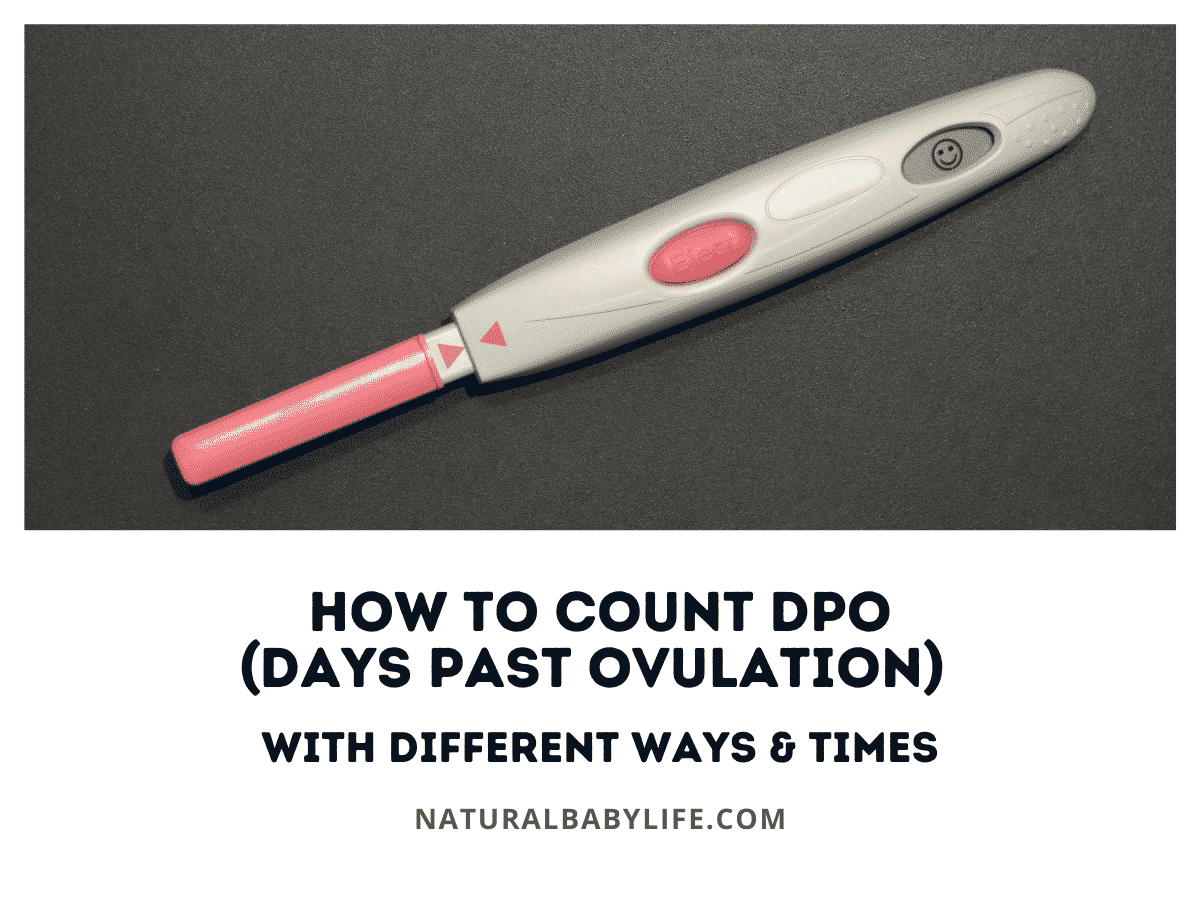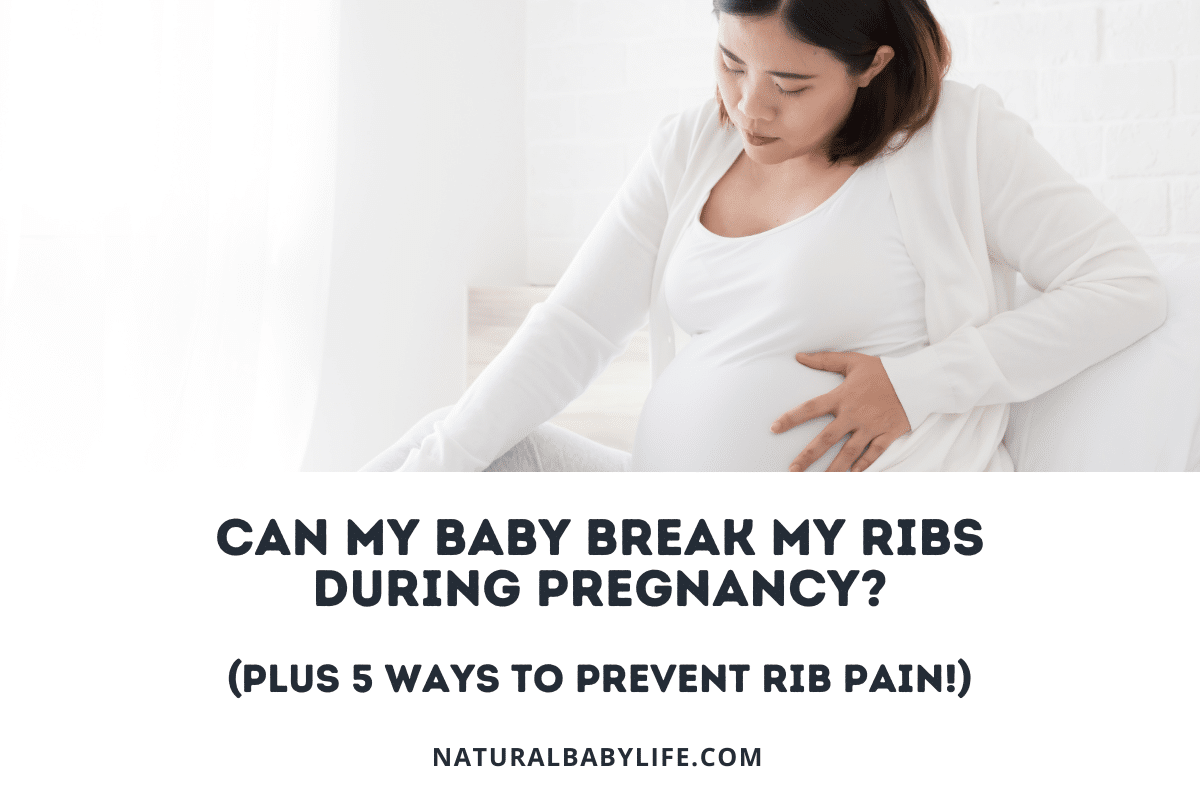If you’re seriously trying to get pregnant, one of the first things you can do to be more effective is learn how to count DPO. By learning to track your ovulation, you improve your chances of getting pregnant. Then, you can best judge when to test by tracking your days past ovulation.
You count your DPO (days past ovulation) by tracking your menstrual cycle, measuring basal body temperature, and checking cervical mucus to determine ovulation. From there, you count each day after ovulation with day 14 being the day most non-pregnant people get their periods.
Keep reading to learn what DPO is, how to calculate it, why it is important for pregnancy testing, and how long you really need to wait.
Table of Contents
What is DPO when trying to conceive
DPO is the common abbreviation for days past ovulation.
Ovulation is the day the egg is released from a woman’s ovaries. In order to get pregnant, this egg only has a small window in which it can be fertilized. Knowing this day makes your attempts to get pregnant–or avoid pregnancy–more effective.

By counting the number of days past ovulation, you can determine when you’ve missed your period and when you might be in the window for a positive pregnancy test.
Trying to conceive abbreviations
If you’ve spent any time in pregnancy forums, you’ve probably come across some posts that seem like they were written in code! There’s a wide world of fertility, pregnancy, and baby language that you may need to know to understand what the posters are saying.
Here are a couple more helpful abbreviations explained:
hCG – Human Chorionic Gonadotropin. This hormone is made by the placenta of a growing baby. It is detectable in a pregnant woman’s blood and urine long before she starts growing a baby bump. Pregnancy tests (both at home and the doctor’s office) test for this.
OPK – Ovulation Predictor Kits. These are usually sets of strips that detect Luteinizing hormone (LH). This rises significantly just before an egg is released, so high levels indicate ovulation will occur within 12 to 36 hours.
BBT – Basal Body Temperature. This is the resting baseline temperature, usually taken upon waking in the morning. It can fluctuate during the day due to activity levels, so it’s important to measure first thing in the morning. This will stay consistently lower before ovulation, and stay elevated from the time the egg is released until menstruation occurs.
When does ovulation happen
Menstrual cycles generally fall into a 28-day rhythm (though there is a huge amount of variability due to health and individuality).
According to this pattern, ovulation (the day the egg is released from the ovaries) occurs around day 14, and fertilization and implantation within the few days following.
HCG levels are detectable between 6 and 14 days afterward. But the day often varies from cycle to cycle, and immensely from person to person, so simply assuming the day you ovulate can miss the mark significantly.
Pinpointing the day you ovulate can mean knowing (or avoiding) pregnancy more accurately than guessing based on the calendar.
Does DPO include ovulation day
When figuring days past ovulation, start counting the day after you ovulate.
Ovulation day is figured as Day 0, the first day DPO is Day 1.
How to count dpo
Because there are no outward signs that ovulation is happening it can be a bit tricky to figure out your DPO.
The first thing you need to do to figure your DPO is to actually determine the date you ovulated. Once you know the date of ovulation, the next day is 1 DPO, the day after that is 2 DPO, and so forth.
For example, if you ovulate on Monday, Tuesday is 1 DPO, Wednesday is 2 DPO, and so on.
Ways to track ovulation
There are several ways to track, and consequently predict, ovulation at home. Common methods include ovulation predictor kits (OPK), tracking your cervical mucus, or tracking your basal body temperature (BBT).
Please know that as you start tracking ovulation, it’s highly effective for many people. However, your body can also present signs of ovulation without ovulating at the typical time or at all. If you are trying to get pregnant for several months, talk to your doctor about your findings.
Determining DPO with OPK (ovulation predictor kits)
Fortunately, there are some products out there that can help you determine your ovulation dates.
Ovulation predictor kits are the easiest way of tracking your ovulation, but it is possible to receive a range of positives across a 2-3 day period. In that case, you will want to use the day that your ovulation kit displays the strongest positive as 0 DPO.
OPKs use the luteinizing hormone (LH) to indicate positive ovulation much the same way that pregnancy tests use the hCG hormone to display positive tests.
LH is a hormone made by your pituitary gland that causes the release of an egg from the ovary. To much or too little can both cause infertility.
There are many ovulation predictor kits (OPKs) on the market, such as the Clearview Advanced Digital Ovulation Kit or the Easy@Home Ovulation Test Strips.
You may want to consider trying different types of tests if you are regularly getting inconsistent test results, or you might want to try coupling the test kit with tracking your BBT to determine the exact day of ovulation.
The less expensive strip kits like Easy@Home can be helpful because you can track the levels of your LH to see which day you have the highest concentration.
You can also use a digital LH monitor that lets you insert the OPKs into the monitor and it produces predictions for you.
Tracking DPO through BBT (basal body temperature)
Traditionally, many women have used their basal body temperature readings to track ovulation to get pregnant or avoid pregnancy.
Prior to ovulation, baseline body temp (BBT) stays constant. On the day of ovulation, it rises several incremental points and stays elevated until menstruation begins the next cycle.
The trick to catching the change is to check your temperature daily, the moment you wake, and before movement affects the baseline. Tracking this over time can give women a solid evidence-based hypothesis for when ovulation day will occur.
A simple thermometer and piece of paper to chart the changes can be sufficient. There are also great apps (like Kindara or Fertility Friend) that do the graphing if you insert the temp. Some even have thermometers that communicate with the app themselves!
Some wearable thermometers take all the guesswork out of temp charting as well. The Ava bracelet and the Tempdrop armband are two such devices that monitor your temperature all night.
Some of these even have an accompanying app, so all you have to do is glance at your phone to check for ovulation day! As these are relatively new tech, the jury is still out on their accuracy.
Tracking ovulation with your cervical mucus
Finally, another accurate way to track ovulation is by monitoring your cervical mucus.
Early in your cycle, your cervical mucus is white and dry. Just prior to ovulation, it turns clear and slippery. The consistency is often compared to an egg white.
To check your cervical mucus, insert two clean fingers into your vagina. After you withdraw your fingers, hold your thumb against your fingers.
It’s time to have sex when the cervical mucus is clear and sticks between your finger and thumb when you separate them.
Why is DPO important
If you want to get pregnant then you must figure out when your ovulation happens so that you can time intercourse correctly and have the best chance of conceiving.
Ultimately, the chances of knowing you’re pregnant as soon as possible increase if you’re aware of what’s going on in your cycle. Tracking methods coupled with testing get the earliest results.
Additionally, knowing your DPO will help you know when it’s productive to take a pregnancy test and when you should expect your period.
Being aware of fluctuations in your normal cycle is a great way to be in tune with your health and hormones.
What DPO does implantation occur
Implantation occurs when the tiny blastocyst attaches to your uterine lining. It’s a major step on your path to a baby!
A blastocyst is a fertilized egg that travels down the fallopian tube and into the uterus. This typically happens five to six days after fertilization.
Fertilization happens when a sperm meets an egg directly after ovulation.
How many DPO do pregnancy symptoms start
Symptom spotting is not your friend when trying to conceive.
Prior to your missed period, fatigue, breast tenderness, or other funny feelings can more likely be attributed to hormone changes stemming from ovulation and your menstrual cycle, not pregnancy.
It’s unlikely you’ll feel any pregnancy symptoms until 14 DPO.
How many DPO for BFP (big fat positive)
Many women use a combination of the methods above to track fertility.
The generally accepted advice is to wait about 2 weeks after ovulation – or around the time of your missed period – to test for pregnancy.
However, once you can pinpoint ovulation, it may be less than a week until you can potentially take a positive pregnancy test!

Let’s check out a day-to-day comparison:
Can you test at 4 DPO
You can test, but the fertilized egg (if there is one), is probably only just reaching the uterine lining about now.
Try to wait a few days for the hormones to increase. Once implantation occurs, the placenta will begin to release hCG, some of which will be released into the mom’s blood and show up in her urine. This is what pregnancy tests measure.
Can you test at 6 DPO
At this point, even if you are pregnant, you have a 96% chance of a false negative.
The hCG hormones, if they’re there, are difficult to detect. Only about 1 in 28 pregnant women will see a faint positive sign.
Can you test at 7 DPO
It’s early, but maybe! You have a 92% chance of a false negative a week after ovulation. But one in 13 women will see a faint positive on a pregnancy test.
Can you test at 9 DPO
Almost even potential today! 52% of women will get a false negative; about 47% will see a positive! hCG hormones double every day after implantation, so some tests may be able to detect it.
Can you test at 10 DPO
One-third of women will still get false negatives at 10 days, but 66% will see that faint pink line!
Can you test at 11 DPO
At this point, your doctor can order a blood test that will detect a pregnancy. But you’re getting close at home – nearly 80% of over-the-counter pregnancy tests will show positive now.
Can you test at 12 DPO
One in seven pregnant women will still get a false negative, but the likelihood of a positive is growing by the day. Some women will begin to experience light, early pregnancy symptoms.
Can you test at 13 DPO
About 10% of women will still see a false negative, but the chances of positives are high. If your cycle is less than 28 days, your missed period is a major clue.
Can you test at 14 DPO
Chances are in your favor; 92% of pregnancies are detectable now. Pregnancy symptoms may be increasingly noticeable.
Can you test at 15 or more DPO
The longer you wait, the more pregnancy hormones will increase, making a positive test more likely. If you are pregnant, the absence of your period will be a big indication that major life changes are in your future.
Testing for a BFP (Big Fat Positive) at different DPO (Days Past Ovulation)
| DPO (Days Past Ovulation) | Chance of Accurate Positive | Chance of False Negative |
|---|---|---|
| 4 days | <3% | >96% |
| 6 days | 3% | 96% |
| 7 days | 7.5% | 92% |
| 9 days | 47% | 52% |
| 10 days | 66% | 33% |
| 11 days | 80% | 26% |
| 12 days | 86% | 20% |
| 13 days | 88% | 10% |
| 14 days | 92% | <10% |
| 15 | 95%+ | <10% |
Here is a big chart showing how your likelihood of getting either a false negative or confirmed positive changes day-to-day!
Conclusion
Tracking your ovulation can help you get pregnant, avoid pregnancy, or just get a better idea of how your body works. After you determine your ovulation date, you can then count the days after to determine your DPO.



















